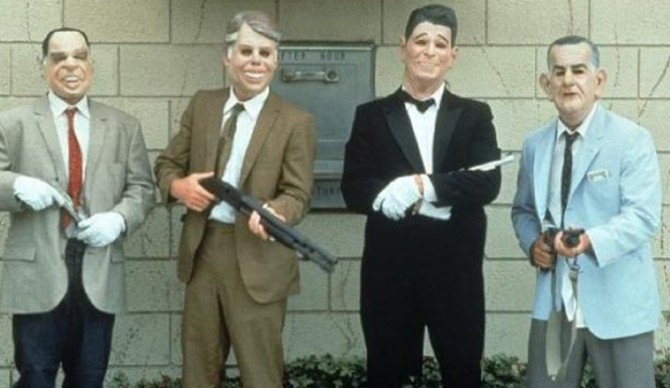The Hurley Pro at Trestles kicked off today in what some call the best wave on the planet. And that’s mostly because until perfectly peeling man made waves were a reality, no other spot was able to pump out the consistent, peeling symmetry you see coming out of Lower Trestles. And because of this the stretch of coast between Church and Cottons has become the epicenter of high performance surfing in California. With five different waves on tap the comparisons to surfing’s version of a skatepark are well deserved, and every surfer from San Diego to Los Angeles regularly makes the trek. A majority of us are headed to Lowers. But there’s plenty of diversity and history behind the world class wave that you may not be keen on. Here are 5 random facts you (probably) didn’t know about the home of the WSL’s Hurley Pro.
It’s smack dab in the middle of the largest Marine Corps base in the world
Unless you’ve just never been there it’s virtually impossible to miss the fact that Trestles is plotted down in the middle of a US Military base. What still surprises some is the fact that Camp Pendleton has been the world’s largest Marine Corps base since 1942. The United States Marine Corps took over 122,000 acres of land thanks to the Second War Powers Act in 1942, transforming three mountain ranges, five lakes, 250 miles of roads and 20 miles of beach into one of California’s most inaccessible waves. Speaking of…
It was an outlaw’s wave until the 70’s
For decades the stretch of coast we now know as the best wave on the West Coast was off limits to the public. That didn’t stop people from surfing there though, with plenty of old tales of surfers dodging the nearby military patrols to get to the secluded wave. As the Encyclopedia of Surfing puts it, “the Trestles surfing experience was in large part a strategic and tactical engagement with the U.S. Marines.” Surfers hid their boards, mapped exit routes, and ducked under the occasional warning shots fired by Marines. Those battles lasted until a certain President of the United States moved next door. That’s right…
The President once lived there
When President Richard Nixon took office in 1969 he decided one of his first acts in office was to get dialed on a Southern California beach house, which is pretty much the same thing any of us would do if elected to office. Dubbed The Western White House, the 9,000 square foot home still sits right in front of Cottons, the northern most break in this stretch of coast. It didn’t take long for President Nixon to do the most solid of solids for California surfers because in 1971 he established the land just south of his new home a state beach, opening it to the public for good. And that’s why now…
It’s one of the most visited State Parks in California
Again, not a huge surprise if you’ve ever surfed Trestles, but it’s estimated that more than two and a half million people visit the area each year. We like to complain about crowds in California, but rarely have a hard number to stick on these claims. Let’s do the math. On a stretch of coast about half the size of Oahu’s North Shore, 2.5 million people tread through the area. Most of them are there for waves. And that number averages out to over 6,800 people daily. It doesn’t matter how early you’re in the parking lot, you’re not getting a wave to yourself.




